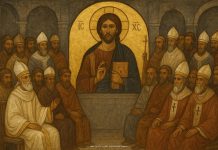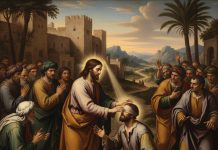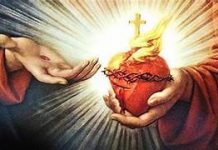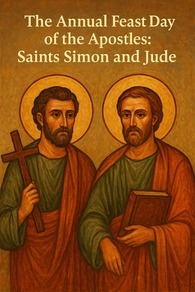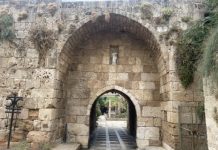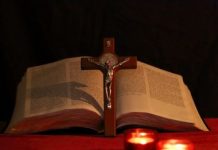The Annual Feast Day of the Apostles: Saints Simon and Jude
Elias Bejjani/October 28, 2025
الذكرى السنوية للقديسين الرسولين سمعان ويهوذا
الياس بجاني/28 تشرين الأول 2025
تحتفل الكنيسة الكاثوليكية اليوم بفرحٍ وابتهاج بعيد القديسين الرسولين سمعان ويهوذا، وهما عمودان راسخان أُسِّسَ عليهما جسد المسيح السري. اسماهما مرتبطان إلى الأبد في قانون القداس، ويمثلان ثنائيًا رسوليًا متحدًا في الرسالة، والاستشهاد، والإرث الروحي الدائم. ورغم قلّة التفاصيل التاريخية خارج العهد الجديد، إلا أن غيرتهما المتقدة في إعلان بشارة الخلاص إلى أقاصي الأرض تبقى مصدر إلهام دائم للمؤمنين على مرّ الأجيال.
من هما وحياتهما المبكرة
يُشار إلى القديس يهوذا في الأناجيل باسم “يهوذا بن يعقوب” أو “تداوس”، تمييزًا له عن الخائن يهوذا الإسخريوطي. وكان يُعد من “إخوة الرب” أو أقربائه، إذ كان ابن أخ القديس يوسف (عن طريق والده كليوباس أو ألفاوس)، وبذلك يكون ابن عمّ السيد المسيح. ويُعتقد تقليديًا أنه وُلد في الجليل، اليهودية (التي كانت آنذاك جزءًا من الإمبراطورية الرومانية)، نحو سنة 10 ميلادية.
أما القديس سمعان، فيُعرف بلقبه “الغيور” أو “القانوي”، وهو إما إشارة إلى انتمائه لحركة الغيورين اليهودية، أو إلى غيرته الشديدة على الشريعة. ويُبرز هذا اللقب قوة المسيح التحويلية التي جمعت في كنفها رجالًا من خلفيات متناقضة، مثل سمعان الغيور ومتى العشّار. وتشير التقاليد إلى أنه وُلد هو أيضًا في الجليل، ربما في قانا، نحو سنة 5 ميلادية.
الرسالة الرسولية في بيروت والمشرق
بعد صعود الرب يسوع إلى السماء، تفرّق الرسل من أورشليم هربًا من الاضطهاد ولتنفيذ وصية الرب: «اذهبوا وتلمذوا جميع الأمم».
ويؤكد تقليد راسخ في الكنائس الشرقية، لا سيما السريانية الأرثوذكسية والمارونية، أن القديسين بطرس وسمعان ويهوذا سافروا إلى بيروت (لبنان الحالي).
ويُروى أن سمعان ويهوذا كان لهما دور محوري في تأسيس الكنيسة الأولى في المنطقة، إذ أمضيا سنوات في بيروت وبنيا فيها أول كنيسة مسيحية. كما يُقال إن القديس بطرس كان برفقتهما حين وضع التسلسل الهرمي الأول للكنيسة – من بطاركة وأساقفة وكهنة – ونظّم هيكلية القداس الإلهي. وقد كانت الرؤية في الكنيسة الناشئة أن تُقام خمس كراسي بطريركية رئيسية: روما (الفاتيكان)، القسطنطينية، أنطاكية، أورشليم، والإسكندرية. وتأسس كرسي أنطاكية أولاً في منطقة سوريا، حيث جلس القديس بطرس على كرسيه البطريركي الأول نحو سنة 42 ميلادية، قبل أن ينتقل إلى روما حوالي سنة 54 ميلادية.
وتؤكد هذه الحقائق الأهمية الكبرى لمنطقة المشرق، وبخاصة لبنان، كنقطة انطلاق ومحور إداري للرسالة الرسولية الأولى. وبعد خدمتهما في لبنان، تابع القديسان سمعان ويهوذا رحلاتهما إلى بلاد ما بين النهرين وفارس (أي العراق وإيران اليوم)، حيث قاما بأعظم أعمالهما التبشيرية المشتركة.
معجزاتهما وشفاعتهما الدائمة
كانت كرازتهما مصحوبة بمعجزات باهرة. ويروي التقليد أن القديس يهوذا تداوس أُرسل إلى الملك أبجر ملك الرها، الذي كان مصابًا بالبرص، فشفاه بأعجوبة من خلال صورة السيد المسيح (المنديل أو “صورة الرها”) بعد أن ناشد الملك الرب يسوع. ومنذ ذلك الحين، عُرف القديس يهوذا كـ شفيع الحالات اليائسة والمستحيلة، إذ إن شفاعته ارتبطت بالأمل في المواقف التي لا رجاء فيها. أما في بلاد فارس، فقد طرد الرسولين الشياطين وشفيا المرضى واهتدى على أيديهما كثيرون، مما أثار حقد الكهنة الوثنيين ودفعهم إلى قتلهما.
الاستشهاد والآثار وإرث أنطاكية
وفقًا لأكثر التقاليد شيوعًا، نالا القديسان سمعان ويهوذا إكليل الشهادة معًا في بلاد فارس نحو سنة 65 ميلادية. لكن تقليدًا آخر، متجذرًا في تاريخ الكنيسة اللبنانية، يذكر أنهما استشهدا في بيروت حيث بشّرا أولًا.
تقليد بيروت يؤكد أن الرسولين دُفنا تحت المذبح في الكنيسة الأولى التي شيّداها في بيروت.
نقل آثارهما إلى روما
بعد أن شرّع الإمبراطور قسطنطين الديانة المسيحية في القرن الرابع (حوالي سنة 325 م)، نُقلت رفاتهما إلى روما، حيث وُضعت تحت مذبح القديس يوسف في الجناح الأيسر من كاتدرائية القديس بطرس في الفاتيكان، إلى جانب ضريح أمير الرسل. لقد ترك القديسان سمعان ويهوذا أثرًا لا يُمحى في تاريخ الكنيسة الجامعة، فبواسطتهما انتقلت الأسرار الإلهية وتعاليم المسيح الأصيلة إلى الأجيال الأولى من المؤمنين. وكان عملهما في المشرق سببًا في قيام الجماعات المسيحية الأولى التي خدمتها البطريركيات القديمة.
وكرسي أنطاكية البطريركي، الذي أسسه القديس بطرس وارتبط بإرثهما الرسولي، نُقل في عهد القديس يوحنا مارون، أول بطريرك ماروني، إلى دير مار يوحنا مارون في كفرحي – لبنان سنة 676 ميلادية، حيث استمر التواصل الرسولي إلى يومنا هذا من بكركي، مقرّ بطريرك أنطاكية وسائر المشرق.
من خلال غيرتهما الرسولية وتضحيتهما الكاملة في سبيل الإيمان، يقف القديسان سمعان ويهوذا كشاهدين خالدين على المحبة الإلهية، إذ إن إخلاصهما الذي أُعلن “حتى سفك دمهما” وضع الأساس المتين للمسيحية في المشرق والعالم القديم بأسره.
**الكاتب ناشط لبناني اغترابي
عنوان الكاتب الألكتروني
Phoenicia@hotmail.com
رابط موقع الكاتب الألكتروني
https://eliasbejjaninews.com
The Annual Feast Day of the Apostles: Saints Simon and Jude
Elias Bejjani/October 28, 2025
Today, the Catholic Church joyfully celebrates the Feast of the Apostles Saints Simon and Jude — two steadfast pillars upon whom the foundation of Christ’s Mystical Body was laid. Their names, forever linked in the Canon of the Mass, symbolize an apostolic pairing united in mission, martyrdom, and eternal legacy. Though historical details outside the New Testament remain scarce, their fervent dedication to proclaiming the Gospel to the ends of the known world continues to inspire the faithful across generations.
Who They Were and Their Early Lives
St. Jude, often referred to as “Judas, son of James,” or “Thaddeus” in the Gospels to distinguish him from the traitor Judas Iscariot, was one of the close “brethren” or kinsmen of Jesus. Through his father Cleophas (or Alphaeus), the brother of St. Joseph, Jude was a first cousin of the Lord. Tradition holds that he was born in Galilee around 10 AD.
St. Simon, uniquely identified as “the Zealot” (or “the Cananaean”), earned this title either for his affiliation with the Jewish nationalist movement known as the Zealots or for his passionate zeal for the Law. This distinction underscores Christ’s unifying power, which brought together men of vastly different backgrounds — such as Simon the Zealot and Matthew the tax collector — into His circle of Apostles. Tradition suggests that Simon was also born in Galilee, perhaps in Cana, around 5 AD.
The Apostolic Mission in Beirut and the East
After the Ascension of Jesus, the Apostles dispersed from Jerusalem to avoid persecution and to fulfill their divine mandate: “Go therefore and make disciples of all nations.” According to a strong tradition upheld in the Eastern Churches — particularly the Syriac Orthodox and Maronite traditions — Saints Peter, Simon, and Jude journeyed to Beirut (in present-day Lebanon).
There, Simon and Jude were said to have played a crucial role in establishing the early Church, spending several years in Beirut. They are traditionally credited with building the very first Christian church in the city. Local tradition also holds that St. Peter was with them, organizing the first ecclesiastical hierarchy — Patriarchs, Bishops, and Priests — and establishing the early structure of the Holy Mass.
In this formative period, five major Patriarchal Sees were envisioned: Rome (Vatican), Constantinople, Antioch, Jerusalem, and Alexandria.
Antioch, located in the Syrian region, was founded first, with St. Peter as its initial Patriarch around 42 AD. He later moved to Rome around 54 AD. These developments highlight the Levant — including Lebanon — as a vital center for the early Church’s missionary and administrative life. Following their ministry in Lebanon, Saints Simon and Jude continued eastward, spreading the Gospel in Mesopotamia and Persia (modern-day Iraq and Iran), where they accomplished their most celebrated missionary work.
Their Miracles and Enduring Patronage
The apostolic mission of Simon and Jude was accompanied by remarkable miracles.
A prominent tradition recounts St. Jude’s journey to King Abgar of Edessa, who suffered from leprosy. At the king’s request, Jude brought him an image of Christ — the Mandylion or Image of Edessa — through which the king was miraculously healed. This act of mercy and intercession established St. Jude as the Patron Saint of Desperate and Impossible Causes, a devotion that remains widespread to this day.
In Persia, the two Apostles performed many wonders, casting out demons, healing the sick, and converting multitudes to the faith. Their success, however, provoked the anger of local pagan priests, ultimately leading to their martyrdom.
Martyrdom, Relics, and the Legacy of Antioch
According to the most widely accepted account, Saints Simon and Jude suffered martyrdom together in Persia around 65 AD. Yet, another ancient tradition — deeply rooted in Lebanese Christianity — maintains that they were martyred in Beirut, where they had first preached the Gospel.
The Beirut Tradition:
This account affirms that the two Apostles were buried beneath the altar of the first church they founded in Beirut.
The Roman Relocation:
After the legalization of Christianity by Emperor Constantine, their relics were transferred to Rome in the 4th century (c. 325 AD). Today, their remains rest beneath the Altar of St. Joseph in the left transept of St. Peter’s Basilica in the Vatican, sharing the sacred space with the Prince of the Apostles himself.
The Apostles Simon and Jude left an indelible mark on the foundation of the universal Church. Through them, the Sacraments and the authentic teachings of Christ were transmitted to the early Christian communities of the East.
The Patriarchal See of Antioch, first established by St. Peter and deeply connected to their legacy, endured centuries of persecution. In 676 AD, St. John Maron, the first Maronite Patriarch, relocated the See to the Monastery of St. John Maroun in Kfarhay, Lebanon — the heart of Maronite Christianity. The continuity of that apostolic line endures today in Bkerke, Lebanon, the current seat of the Maronite Patriarch of Antioch and All the East.
Through their missionary zeal, miraculous works, and ultimate martyrdom, Saints Simon and Jude stand as eternal witnesses to Christ’s truth. Their faith — steadfast even to the shedding of their blood — laid the groundwork for Christianity in the East and remains a luminous example of courage, unity, and perseverance in the service of God.





